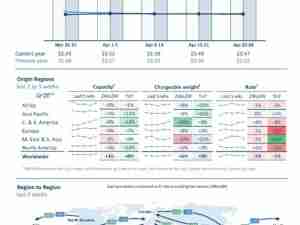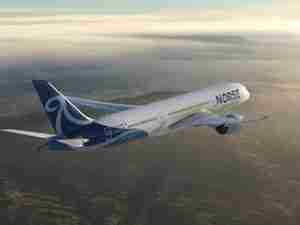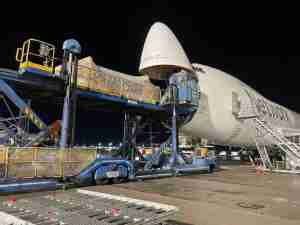Delta Air Lines Inc. fell, leading declines across the airline industry, after saying fuel and a decrease in flying capacity are driving costs higher than what the carrier had expected, overshadowing an otherwise upbeat forecast.
Costs for each seat flown a mile, an industry gauge of efficiency, will be up as much as 22% this quarter compared to 2019 levels, exceeding Delta’s original outlook for 17% higher, the carrier said in a regulatory filing Wednesday. The figure excludes spending for jet fuel, which also is higher.
The update follows Delta’s decision to cut flights starting just ahead of the Memorial Day weekend and through most of the summer to help it recover faster from disruptions caused by weather, worker absences and other issues. Almost all US carriers have cut their initial second-quarter capacity plans, with some trimming into the third quarter, as they’ve struggled to balance surging demand with operational challenges, including a pilot shortage and higher jet fuel prices.
“We’re at the point now, we’re not going to grow any more, probably through the end of this year,” Chief Executive Officer Ed Bastian said at the Bernstein Strategic Decisions Conference. Delta will pay as much as $3.70 a gallon for jet fuel, higher than earlier expectations of as much as $3.35. Delta is covering the “historic level” of fuel prices with fare increases, he said.
Delta declined 4% to $40.03 at 10:48 a.m. in New York trading; United Airlines Holdings Inc. was down 4.1% while American Airlines Group Inc. shares slid 3.4%.
US carriers are counting on the surge of summer travel, despite broadly higher prices across the economy, to kickstart a return to sustained profits after two years of depressed demand during the coronavirus pandemic. Full planes are allowing airlines to boost fares, in some cases enough to offset higher fuel prices. United Airlines Holdings Inc., Southwest Airlines Co. and JetBlue Airways Group Inc. all recently strengthened their revenue projections.
“The demand is off the charts,” Bastian said. “Pricing is very healthy. We expect pricing this summer to be up 25% to 30% on average. We’ve never seen anything of that scale.”
Unit revenue should be as much as 8 percentage points better than an unspecified earlier outlook as the surge in travel allows airlines to boost prices, Delta said. Consumers are choosing to spend on travel even as prices rise across the economy, Bastian said, and he sees the trend continuing despite inflation.
In addition to the capacity reductions through June, Delta will trim 100 daily flights in the US and Latin America from July 1 through Aug. 7, Delta disclosed last week. Capacity this quarter will reach 82% to 83% of 2019 levels, down from original plans for 84%, the carrier said Wednesday.
Adjusted total revenue, boosted by the strong demand and increased prices, should reach 100% of 2019 levels. Delta originally expected a recovery between 93% and 97% for the measure, which excludes the airline’s refinery. Operating margin will be as much as 14%, at the high end of the airline’s initial outlook of 13% to 14%.








